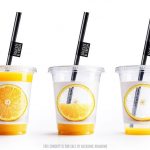Whey Based Beverage
Ready-to-drink beverages offer the advantages of convenience and portability to today’s busy consumers. Whey proteins are often the preferred source for ready-to-drink protein beverages because of their excellent nutritional qualities, bland flavor, ease of digestibility, and unique functionality in beverage systems. Five general trends have influenced food and beverage innovations since 1985: convenience, pleasure, ethnic fusion, tradition and importantly, health and wellness. Sales of energy drinks and ready-to-drinks have grown to $23 billion. Whey beverages are generally classified into four basic types: mixtures of whey (processed or unprocessed, including UF permeates) with fruit or (rarely) vegetable juices; dairy-type, ‘thick’ beverages (fermented or unfermented); thirst-quenching carbonated beverages (the ‘Rivella-type’); and alcoholic beverages (beer, wine or liqueurs).
A variety of whey based beverages consisting of plain, alcoholic, carbonated and fruit flavored have been successfully developed and marketed all over the world. Benefits of the whey proteins can easily be enhanced by the beverages manufactures into different products i.e. highly soluble in a pH range of 2 to 10, produces stable and clear beverages even in the pH range of 3.0 to 3.2.
Beverage Market
In 2005, functional beverages market valued at US $25 bn. The sales of diet drinks, waters and fruit juices showed considerable growth. Global beverage market can be divided into four segments: hot drinks, milk based drinks, soft drinks and alcoholic drinks. First segment i.e Hot drinks can be further classified into tea, coffee and hot malt-based products; second segment of Milk based drinks consists segments like white drinking milk and flavored milk products. Third segment of soft drinks can be further categorized into subcategories which include bottled water; carbonated soft drinks; dilutables, also known as squash and including powders, cordials and syrups; 100% fruit juice, and nectars with 25–99% juice content; still drinks, including ready-to-drink (RTD) teas, sports drinks and other noncarbonated products with less than 25% fruit juice).
Need for Development of Whey Based Beverage
Using cheese whey as a beverage in human nutrition, especially for therapeutic purposes, can be traced back to the ancient Greeks.Whey beverages are manufactured and formulated keeping in consideration the nutritional values, biological and functional properties.
The major problems which are generally encountered in whey based fruit juice beverages are:
- Crystallization of lactose during storage at refrigerated temperature
Coagulation of whey proteins during thermal treatments
Higher viscosity of concentrates affect the effectiveness of thermal treatments
Depleted shelf-life at room temperatures
High content of minerals in the whey are responsible for undesired salty-sour flavour of whey.
Despite of the limitations of using whey in manufacturing beverages, whey is used on larger amounts due to the following reasons:
- Whey is having a broad range of solubility i.e. from pH 3-8.
Whey is having a bland flavor and on many occasion they can act as carrier for the aroma compounds.
Buffering capacity of whey can be explored for survival of probiotic bacteria in the gastro intestinal tract.
Addition of whey improves the ‘mouthfeel’ of the drink by increasing the viscosity of the beverage.
Whey can be also used to solve the problems associated with cloudiness of tropical fruit juices and produce a cloud stable juice.
Whey beverage types and their ingredients
Given the advantages of whey protein, it has become a popular source of nutrition in a variety of forms: whey protein supplement bars, whey protein concentrates, whey protein isolates, and whey protein beverages. Four basic types of whey beverages were identified:
1- Whey beverages based on fruit juices
2- Dairy-type whey beverages
3- Whey Based Thirst-Quenching Carbonated Beverages
4- Alcoholic beverage
Conclusion
In the present fiercely competitive beverage market, the classical whey drinks may be facing tough times. For a beverage to be accepted by the modern consumers, it has to satisfy at least some of the main determinants of success–desirable sensory quality, thirst-quenching effectiveness, favorable price and positive ‘health image’. With the peculiarities of the whey flavor interfering with many flavoring ingredients and the processing costs adding to the rapidly rising value of the formerly bothersome waste, the future of the whey beverages might lie mainly in the last attribute, the special nutraceutical qualities of some of the whey components. Consumer features like convenience, practicability, flavor, nutritional value, variants are generally affecting the market size of the functional drinks. As far as milk is concerned, it is now steadily becoming a functional drink in its various forms like drinkable yoghurt, flavored milk and others and a vital role will be played by whey based drinks. Whey drinks with added carbohydrates and increased level of salts can be used for formulating sports drinks which will be having different function like recovery of muscle and muscle cramps, increase in lean weight, overcoming the adenine nucleotides depletion, acting as a neurostimulant, Glycogen depletion and others. Whey and whey based products can be used to formulate different beverages with multiple application and functionalities.

